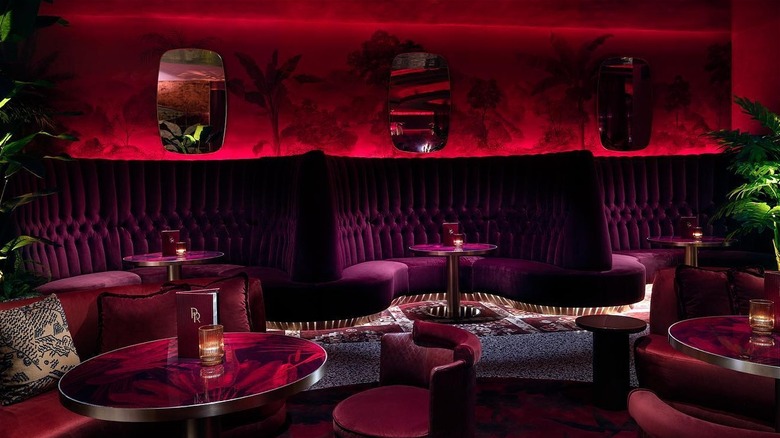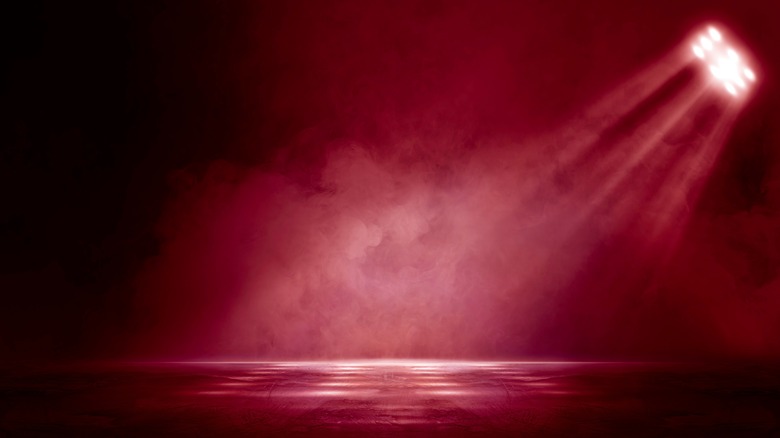Dining In Red Light Is An Acquired Taste
Dining experiences have evolved far beyond mere gustatory pleasures. From themed restaurants to innovative culinary concepts, there's no shortage of novel ways to tantalize our taste buds. Among these unique experiences, one that has been gaining attention is red-light dining. What is red-light dining? Imagine stepping into a restaurant where the atmosphere is bathed in a warm, crimson hue offering an almost-red, windowless feel. This is the essence of red-light dining, an unconventional way to enjoy a meal, and it's taking the restaurant scene by storm.
Restaurants like Cincinnati's Baru, Bozeman, Montana's est.1864, and Las Vegas's Rouge Room fully embraced the red light vibes. Additionally, the Rouge Room's ambiance seems to garner high remarks from guests gushing about the red lights, who say they give swanky, roaring '20s lounge feels. It's clear that the use of red lighting throughout the dining area creates an ambiance that differs from the normal low-lit or well-lit experience. It also makes you question how you see and wonder if the restaurants provide flashlights.
While red-light dining offers a unique and moody atmosphere, it's not without its drawbacks. The subdued lighting can indeed be distracting, making it harder to appreciate the finer details of the meal. For instance, reading the menu or identifying the components of a dish can be challenging. However, it's precisely these challenges that make red-light dining a sensory adventure worth embarking on. Who knows — it might even be the perfect lighting for your next selfie.
The science behind red-light dining
What's the secret behind the allure of dining in a red-lit setting? It turns out that the color red has a psychological impact on our perception. Red light has been associated with creating a cozy, intimate atmosphere (Psychology Today). Moreover, dining under red light can enhance our other senses, such as taste and smell, as we rely more on them to compensate for the reduced visual clarity. A study done in 2009 by Mental Floss shows the effects of lighting color on wine drinkers alone. The participants in the red lighting group claimed that their wine tasted sweeter and richer.
Additionally, red lights are used for a boatload of things that aren't just dining. They hold significant prominence in the health and wellness sphere. Red light therapy employs low-grade red lights to improve aspects like skin appearance and plant growth, as noted by the Cleveland Clinic. While this is not the exact same thing, it makes us wonder: Who got their idea from whom?
Red-light dining is just one example of how the culinary world is constantly pushing boundaries. Concepts like dining in the dark challenge our reliance on sight and encourage us to experience food in an entirely new way. These trends go beyond taste by involving our other senses, ultimately expanding our appreciation for the culinary arts. Whether it's the warm glow of red light or the darkness that heightens our senses, be prepared for an adventure.

